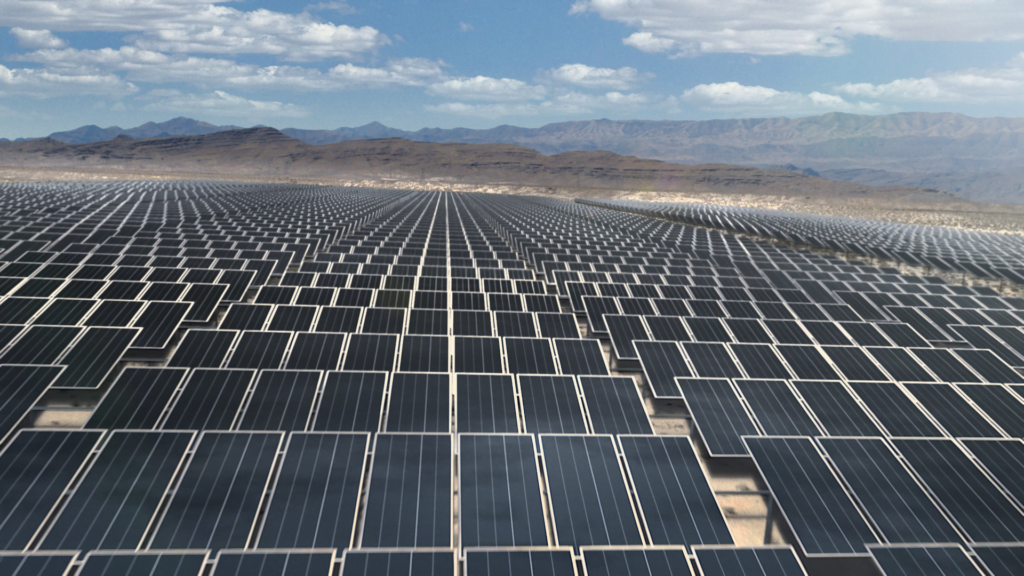Testing of the UPS at the Dublin data centre site. Image: Microsoft.
Microsoft will be the latest big tech player to use battery storage at data centres, which will provide grid flexibility services when not being called upon as backup power.
Lithium-ion batteries will be used instead of diesel generators at a site in Dublin, Ireland and the installation is nearing completion, according to an entry in the company’s corporate blog.
The system has been certified, tested and approved for grid connection; Microsoft staffer John Roach wrote last week.
It’s an uninterruptible power system (UPS) that is also “grid-interactive”. In other words, as well as providing backup power supplies to electrical equipment – which protects the equipment from damage if the grid goes down as well as keeping the centre running – the batteries will also provide grid services.
Microsoft had commissioned advisory firm Baringa to evaluate opportunities to decarbonise Irish data centres with the grid-interactive UPS technology. Baringa’s study found that it could displace fossil fuel use as well as providing system services in the DS3 grid-balancing markets of transmission operator EirGrid.
It would also mean higher utilisation of renewable energy on the grid that would otherwise be curtailed and lost.
Ireland is targeting meeting 70% of electricity demand with renewable energy by the end of the decade. With Ireland experiencing a recent boom in data centre building, EirGrid forecasted in 2019 that they could be responsible for 29% of all electricity demand in the country within 10 years.
Baringa meanwhile said replacing fossil fuels at data centre operations could lead to a 2 million metric tonne decrease in CO2 emissions by 2025, equivalent to a fifth of Ireland’s entire power sector emissions. Batteries are playing a key role in DS3, which has a market structure EriGrid implemented to accomodate storage.
Power management group Eaton has developed the UPS equipment through a wider partnership with Microsoft, deploying proof-of-concept models in 2020 at a data centre in Chicago, US. Energy-Storage.news has reached out to Eaton to ask about the sizing and capacity of the UPS.
Enel X will take the battery asset into the DS3 grid services markets for frequency response.
The announcement follows on the heels of Google’s project at one of its data centres in Belgium. That 2.75MW/5.5MWh system was described by the search engine company as a likely precursor to a wider rollout across its global operations.
Like Microsoft, Google will try out the battery technology’s ability to provide grid services. That can not only earn the asset owner money but also help maintain stability of the grid at lower cost and with lower emissions than by using fossil fuels.
Both companies are targeting fully carbon-free operations by 2030. Incidentally, they have also both recently joined the Long Duration Energy Storage Council (LDES Council).
Other data centre operators and developers are trying out batteries too, with the most recent example reported by this site a project in Wyoming, US, which will use zinc-based batteries as backup power.
Broad Reach Power leans on energy storage experience to manage Texas data centre’s ERCOT play
On a related note, US independent power producer (IPP) Broad Reach Power is also making a move into the data centre space. The company develops and owns utility-scale wind, solar and energy storage.
That has included some of the biggest standalone battery storage projects in Texas’ ERCOT market, one of the US’ leading regions for batteries on the grid.
The company’s subsidiary Broad Reach Energy Services has entered a partnership with Lancium, an infrastructure solutions group that is building data centres in areas with abundant renewable energy resources.
Lancium has also developed a proprietary technology which helps data centres act as smart demand response assets, with its Lancium Smart Response software able to command centres to turn up or turn down energy use within five seconds of receiving a grid signal.
The company’s first 345MW site is being built in Fort Stockton, Texas. Broad Reach will supply the site with retail energy and provide scheduling services for the site’s energy capacity. The Fort Stockton campus will be qualified to operate as a ‘Controllable Load Resource’ in the ERCOT wholesale market and is planned to be fully operational this summer.
Broad Reach executive VP Paul Choi said the IPP’s experience in managing large-scale energy storage in the ERCOT service area made it well-positioned to optimise Lancium’s participation in the market. Broad Reach Power was valued in excess of US$600 million last November as a 50% stake in the company was bought by asset management firm Apollo.
Continue reading










